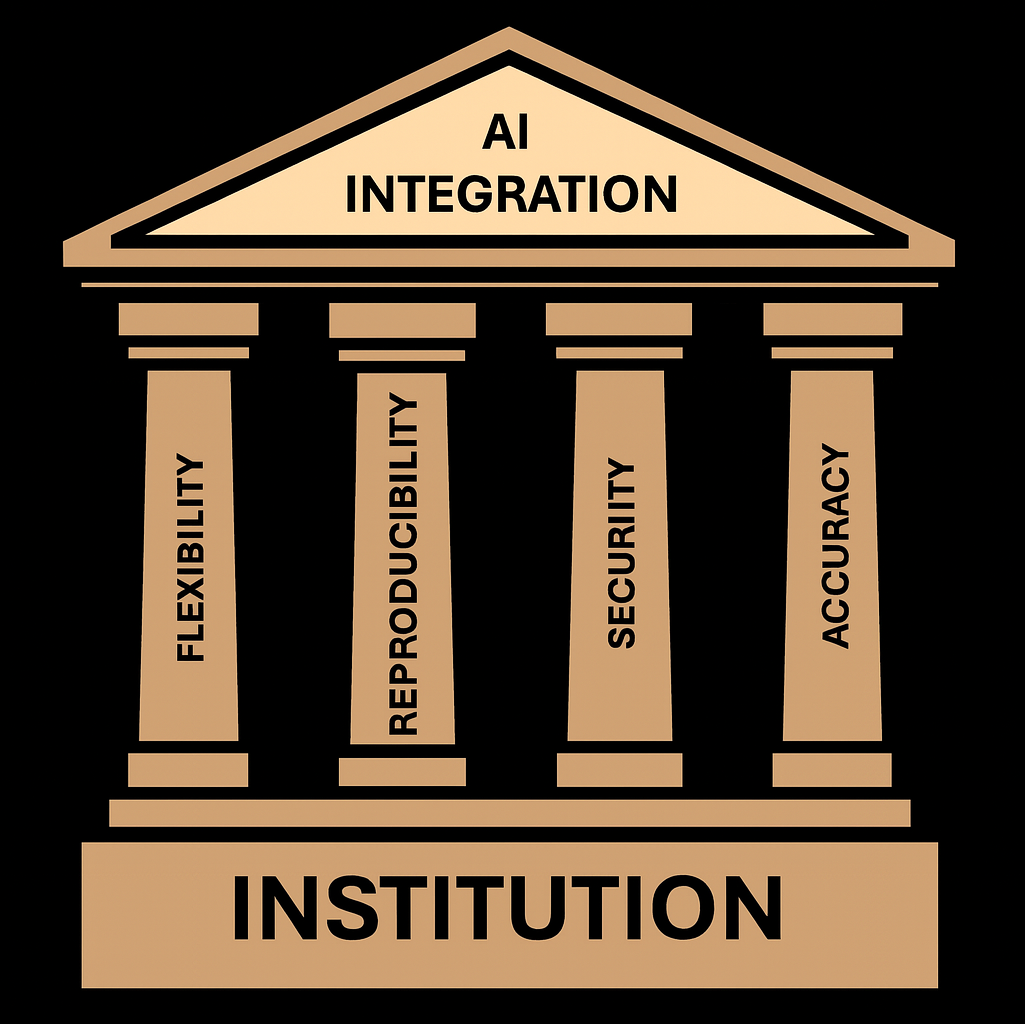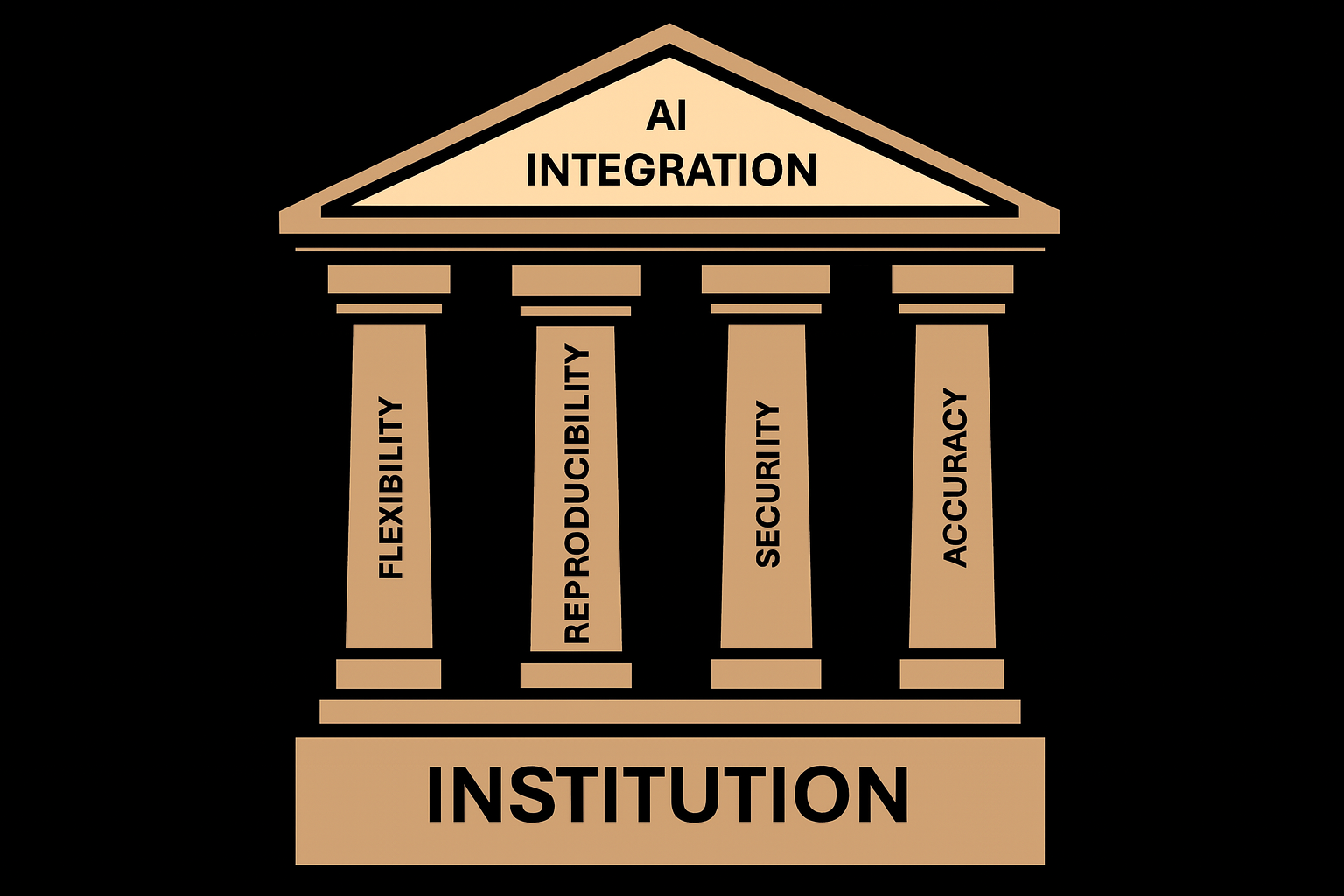The Four Pillars of AI4RA: A Foundational Framework
By Jason Cahoon
For any funded research project, there is a team of Research Administrators working behind the scenes, enabling each step of the project’s development. RA offices play a crucial role in the research enterprise; their work traffics essential resources to their institutions and the research projects that take place there, all while ensuring compliance and transparent reporting as research projects develop.
The bar is set high for RA offices as they execute this critical work. They process volumes of lengthy documents while navigating nuanced conditions such as specific sponsor guidelines, institutional policies, and complex compliance requirements. These documents contain sensitive (and sometimes personally indefinable) information that is strictly protected under institutional, federal, and state policies. RA offices are tasked to handle these documents accurately and securely, all in dynamic, rapidly evolving data environments.

Across the United States, RA organizations work to meet this high bar with limited budgets and finite staffing, making it challenging to keep up. Fortunately, the rapid development of AI tools presents potential solutions to the intense labor demands in the RA workforce. AI tools have the potential to streamline many routine administrative tasks, freeing time for Research Administrators to steer their efforts toward jobs that more acutely require human intelligence and context-specific knowledge.
The potential for AI solutions in RA is exciting, and some RA offices are already exploring ways to leverage AI. There are, however, significant limitations to readily available AI tools, especially as they integrate into RA workflows.
In a previous post, we discussed four points of complication that off-the-shelf, AI chatbots introduce to any data handling process. These points of complication include security, accuracy, flexibility, and reproducibility. Through any combination of these points, AI tools can introduce compromises in one’s data handling, and for many of the jobs that RA offices execute, the stakes are too high to make room for compromises.
If RAs need to process complex information accurately and securely to meet critical compliance standards, their tools must do so as well. Data handling tools can only meet these standards reliably if they can consistently reproduce administrative processes and flexibly integrate with other data handling systems. The high standards that RA offices maintain along these four benchmarks make each of them stand as an essential pillars for dependable AI integration into RA workflows.
These four pillars are shaped from real observations in the RA field. As the AI4RA Initiative has developed, RA professionals at the University of Idaho and Southern Utah University have collaborated to identify the core demands for any AI tool in RA, ultimately determining these four pillars.

Of course, every RA office operates under its own set of conditions, including the University of Idaho and Southern Utah University. When implementing any new technology, there are differences between RA organizations that come into play, such as institutional policies or established data handlings systems. Still, the four pillars stand as a framework to map these nuances onto the most fundamental benchmarks for AI integration in RA; they stand as a starting point to launch into context-specific planning.
So, here at AI Trail Blazer, we will reference the four pillars frequently as we discuss AI’s place in RA offices. We will use them to assess the capabilities of AI tools, map these capabilities onto the criteria for RA workflows, and together, discuss pathways to close these gaps, one solution at a time.
And we can start our mapping here, in the comments section of this post. The AI4RA teams wants to know more about the concerns that your organization has for AI use. What data handling criteria do you struggle to satisfy with AI tools? For what tasks is meeting these criteria important? Let us know in the comments below!

